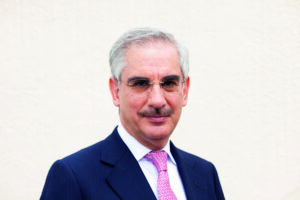
I became an interventional radiologist by accident. As a resident in cardiology, I had an unusual chief: he belonged to a new breed of cardiologists who did cardiac catheterisations and coronary angioplasties. When I expressed an interest in doing the same, he said: “This work is usually done by radiologists. I am the exception to the rule. Go to the Hammersmith Hospital and ask Robert Steiner, the professor of radiology, to train you.” Steiner said: “If you want me to teach you, you have to become a radiologist.” “Thank you, Professor,” I said. “You start on the first of October.” That was my job interview. How times have changed…
Act I: Interventional cardiology
During my basic training in radiology, I went to the cardiac lab, within the department of radiology, just to observe the work, in preparation for what I thought would be my future career. Steiner allowed cardiologists as well as radiologists to be trained in cardiac catheterisation and intervention. Although the radiologists had excellent technical skills, it was obvious to me that their role in this new discipline was destined to disappear. Why? Because they were interested mainly in the catheters and the pictures. They were happy for the cardiologists to monitor the electrophysiological parameters and, most importantly, to look after the patients. That battle was lost before it even started.
Act II: Peripheral vascular interventions
Hammersmith Hospital was the home of the emerging discipline of interventional radiology (IR). It was an exciting time, with such a dizzying number of developments in all organ systems that it was difficult to choose a focus. Some of the things we did would be illegal today, like drawing the shape of a plastic spiral biliary stent on the silver paper in a cigarette packet (no, not mine), having the device in my hand a week later, and implanting it across a malignant hilar stricture the following day. What one could do was limited only by the anatomy of the human body and imagination. There was no challenge to IR from any other discipline. But, having witnessed the loss of cardiac intervention, I was certain that Charles Dotter’s exhortation to ‘accept clinical responsibility’ was wise.
When I was appointed to the university chair of IR by the Senate of the University of London in 1992, I approached the Royal College of Radiologists (RCR) to encourage them to create a new method of training, distinct from that of diagnostic radiology (DR), that would allow future interventional radiologists to look after their own patients. A historic meeting of the three governing bodies of the college—the faculties of radiation oncology and radiology, and the RCR council—was convened by the president of the college, who was a radiation oncologist. I told them that devices called ‘aortic stent grafts’ would change the way peripheral vascular disease was managed and that radiologists had an opportunity to play a major role in this field, provided they were trained as clinicians rather than as imagers. The radiation oncologists understood and agreed. The radiologists didn’t. I was told that ‘teamwork is the way forward’, which was code for ‘others can look after the patients of interventional radiologists’. I allowed my frustration to show and said, ‘teamwork is the kiss of death’. What I meant was that ‘shared’ clinical responsibility is an illusion; either you are a fully-fledged clinician, or you are not. My retort was inelegant and ungracious, but it was correct. Much of vascular IR is now in the hands of vascular surgeons.
Act III: Interventional oncology (IO)
The encroachment on IO by other specialties is still patchy because, until recently, it has focused on palliation and the treatment of small tumours in patients who are not candidates for surgery. This is changing fast, as solid scientific evidence now supports the use of ablation as a primary treatment of small tumours in the kidney and the liver. As IO expands, surgeons will want to use its techniques to replace major surgery.
Several countries are trying to establish IR as a specialty separate from DR, following the example of the American Board of Radiology (ABR). This is necessary, but not sufficient. If IR is to thrive as an independent discipline, rather than just tick along as an optional extra to surgery and radiation therapy, its practitioners must be full-time clinicians. They must stop spending time reading diagnostic images other than those concerning the patients they treat. Even those studies must be formally reported by diagnostic radiologists rather than by interventional radiologists. This will not happen without radical changes to training and recruitment.
The future of IR will be decided by institutions such as the RCR, and its counterparts in other countries, which define the pattern of training and practice of their members. If such professional bodies want to retain IR, they must create a specialty that focuses on clinical and procedural training. Although the intimate understanding of radiological imaging is a vital aspect of the skillset of interventional radiologists, they should be able to use that knowledge to guide their interventions and to assess the results. True, full-time clinical practice in IR can become a reality only if dual certification stops. Such a specialty would attract trainees with a surgical mindset, who are understandably reluctant to spend several years away from clinical practice in diagnostic radiology learning to be imagers.
Will this happen? Well…anything is possible. But betting more than half a pint of beer on it might be a little too optimistic.
Andreas Adam is emeritus professor of interventional radiology at King’s College London, UK and joint editor-in-chief of Interventional News.










